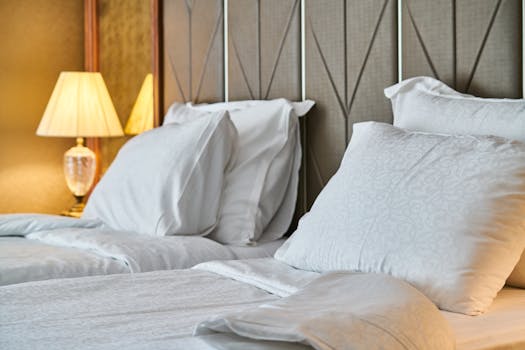Creating a Comfortable and Welcoming Guest Room in a Confined Space
In today’s world, where space is often at a premium, creating a comfortable and welcoming guest room can seem like a daunting task. However, with thoughtful planning and clever design, even the smallest spaces can be transformed into inviting retreats for your guests. This article will guide you through essential steps to arrange a guest room that maximizes comfort and style, regardless of size.
Understanding the Importance of a Guest Room
A well-arranged guest room serves multiple purposes. It not only provides a place for visitors to rest but also reflects your hospitality and attention to detail. According to a survey by the American Hotel and Lodging Educational Institute, 70% of guests consider the comfort of their sleeping arrangements as the most important factor in their overall satisfaction. Therefore, creating a cozy environment is crucial.
Essential Steps to Arrange Your Guest Room
1. Choose the Right Location
When selecting a space for your guest room, consider the following:
- Proximity to a bathroom: Guests appreciate easy access to facilities.
- Noise levels: A quieter area will enhance relaxation.
- Natural light: A well-lit room feels more inviting.
2. Optimize Space with Smart Furniture Choices
In confined spaces, furniture selection is key. Here are some tips:
- Multi-functional furniture: Consider a sofa bed or a daybed that can serve as both seating and sleeping space.
- Foldable furniture: A foldable desk or chair can be stored away when not in use, freeing up space.
- Vertical storage: Use shelves and wall-mounted units to keep the floor clear.
3. Create a Cozy Atmosphere
To make your guest room feel warm and inviting, focus on the following elements:
- Color scheme: Soft, neutral colors can make a small room feel larger and more serene.
- Textiles: Layering different textures with blankets, cushions, and rugs adds warmth and comfort.
- Lighting: Use a combination of ambient, task, and accent lighting to create a welcoming glow.
4. Personal Touches Matter
Adding personal touches can make your guests feel special. Consider these ideas:
- Welcome basket: Include snacks, bottled water, and local maps or brochures.
- Artwork: Hang local art or photographs that reflect your personality and the area.
- Books and magazines: Provide reading material that caters to your guests’ interests.
Case Studies: Successful Guest Room Transformations
To illustrate the effectiveness of these strategies, let’s look at two case studies:
Case Study 1: The Urban Apartment
A couple living in a 600-square-foot apartment transformed their small den into a guest room. They opted for a high-quality sofa bed and added a wall-mounted desk that could be folded away. By using light colors and mirrors, they created an illusion of space, making the room feel larger than it was.
Case Study 2: The Tiny House
A family living in a tiny house utilized a lofted bed to maximize floor space. They incorporated under-bed storage for linens and used a small, collapsible table for dining. Personal touches like family photos and a small bookshelf made the space feel homey and welcoming.
Statistics on Guest Room Preferences
Understanding what guests value can help you prioritize your arrangements. A study by the National Sleep Foundation found that:
- 80% of guests prefer a comfortable mattress.
- 75% appreciate having extra pillows and blankets available.
- 65% value privacy and soundproofing in their accommodations.
Conclusion: Key Takeaways for Your Guest Room
Arranging a comfortable and welcoming guest room in a confined space is entirely achievable with the right approach. By choosing the right location, optimizing furniture, creating a cozy atmosphere, and adding personal touches, you can ensure that your guests feel at home. Remember, the goal is to create a space that is not only functional but also reflects your hospitality. With these essential steps, your guest room will be a delightful retreat for anyone who visits.
